History and concept of style
The Nordic style originated in the 50s – it is believed that its founder was the Swedish king Gustav III. Impressed by the interiors of Versailles, the ruler wanted to build his residence in its likeness. The palace of Gustav III turned out to be more modest, but lighter and lighter: its interiors intertwined national Swedish motifs and aristocratic elegance. That is why the traditional Scandinavian style is also called Gustavian.
A lot has changed since the middle of the last century. Living spaces have become simpler and more laconic, but the spirit of antiquity can still be captured: tiled stoves and stucco on the ceiling are carefully preserved. Historical details add nobility and elegance to the decor.
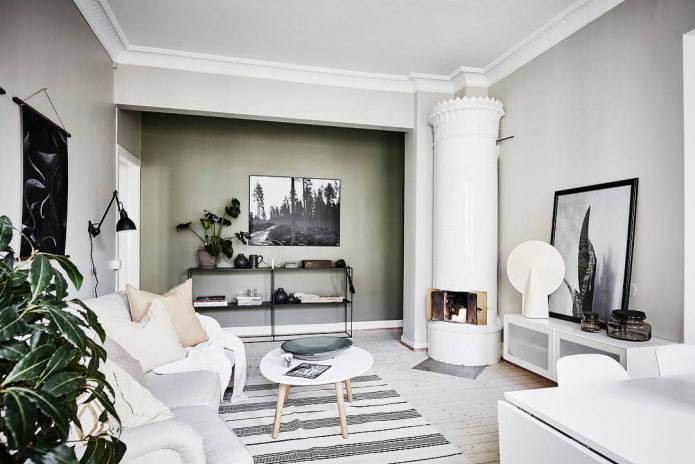
Distinctive features of the style
A sense of harmony and air is achieved not only with the help of well-chosen furniture or the shade of the walls. Scandinavians love order: that is why there is no room for unnecessary things in their apartments. Storage systems in houses are thought out to the smallest detail – this increases the comfort of life and improves the visual perception of the interior.
The style is suitable for those who do not like the demonstration of luxury in the home environment. If you are uncomfortable in a classic interior, where severity prevails and only expensive noble materials are used, you may like the Scandinavian style.
Since the inhabitants of Scandinavian countries are proud of their nature, they try to organically fit it into their home. Grassy, sandy and calm gray shades, as well as furniture and decor made of natural materials allow you to let a piece of forest, sea or mountains into the apartment.
Due to the fact that there is little sun in the northern countries, their residents try to improve the situation with the help of light decoration. Light is a distinctive feature of the Nordic style, which is given special attention when decorating living space. Many apartments have no curtains on the windows so that nothing blocks the sun’s rays.


Types of Scandi
This style has several subspecies, because each northern country has brought something of its own to it:
- Classic Swedish style implies simplicity and an abundance of white. The main principle followed when decorating a house is rational moderation. The furniture is solid and functional, and laconicism successfully coexists with dear to the heart decor.
- Realizing the Danish style, close to the philosophy of hygge (serenity and satisfaction), designers and owners of apartments fill the environment with objects that are associated with comfort and enveloping coziness. Here there are always soft blankets, pillows, poufs and carpets, and the shades smoothly flow into each other.
- The Finnish direction is distinguished by a mixture of elements from different styles. Here you can find modern equipment adjacent to natural motifs – a table made of a stump or a stack of firewood. The Finns are not averse to hanging a crystal chandelier in a modest living room or combining high-tech furniture with an antique floor lamp.
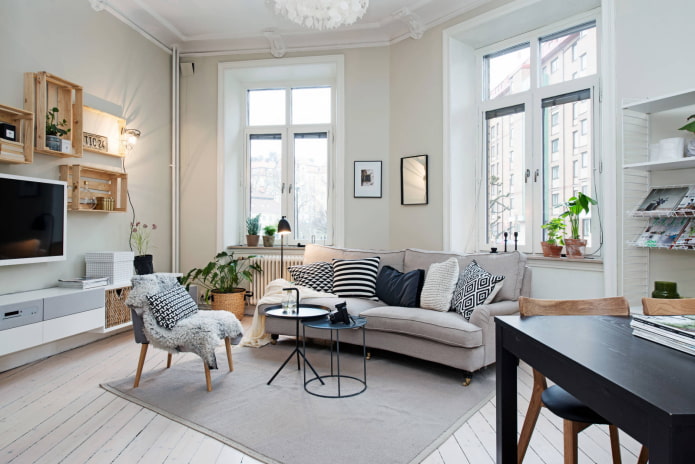
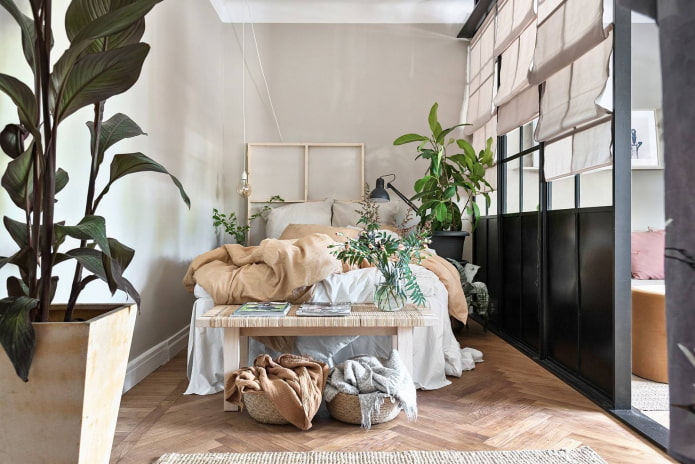
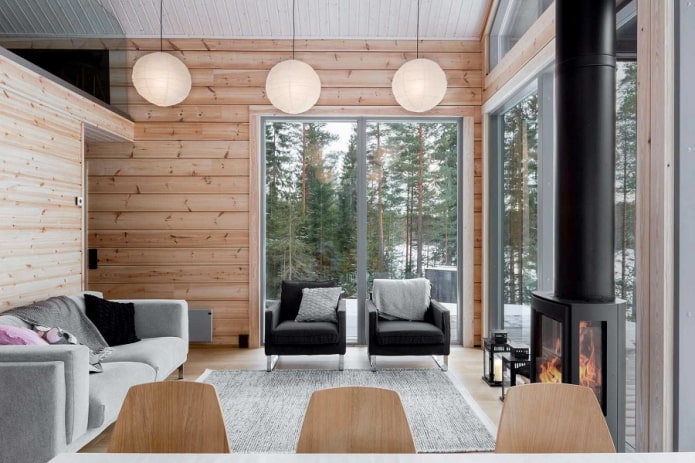
- The people of northern Norway pay a lot of attention to wood and folk motifs. The country is famous for its rocky fjords and harsh climate. The Norwegian style has a lot of dark tones borrowed from nature. The walls are often paneled with beams, which creates the impression that you are in a private house, not an apartment.
- The Icelandic style pays more attention to national motifs. It is similar to the classic Scandinavian style, but it has more wood and natural greenery.


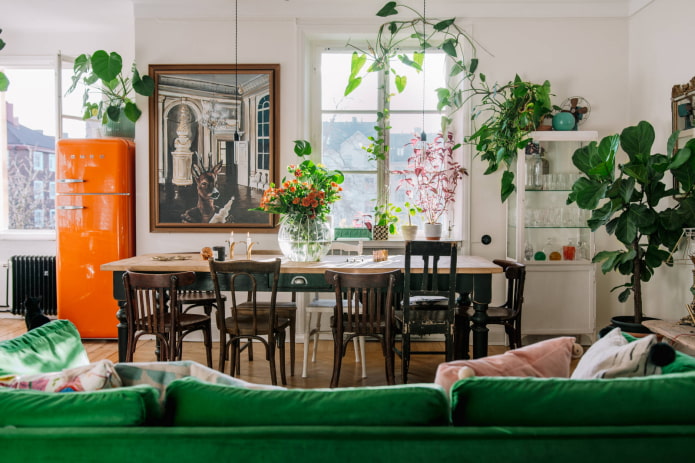
What color scheme to choose?
Scandinavian style can be different, which means it is not necessary to paint the walls in snow-white tones to get an authentic setting. A light base is relevant for those who want to fill the space with air: light gray, beige or warm “Stockholm white” will do, obtained by adding yellow and gray colors. If the side is sunny, you can use a cool white with a blue undertone.
Light walls become a clean canvas for furniture and decor. When arranging, the house is filled with details that stand out favorably against a monochromatic background.
A restrained palette of pastel shades is also reflected in the choice of textiles, upholstery of the sofa and armchairs. Black often serves as a contrast – it gives the atmosphere a graphic and strict look.
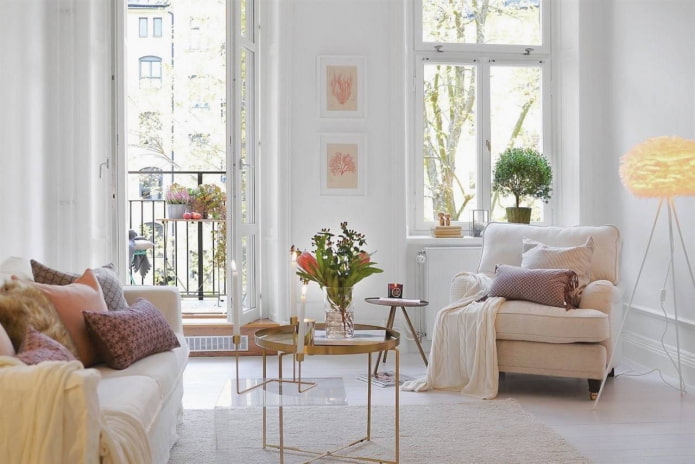
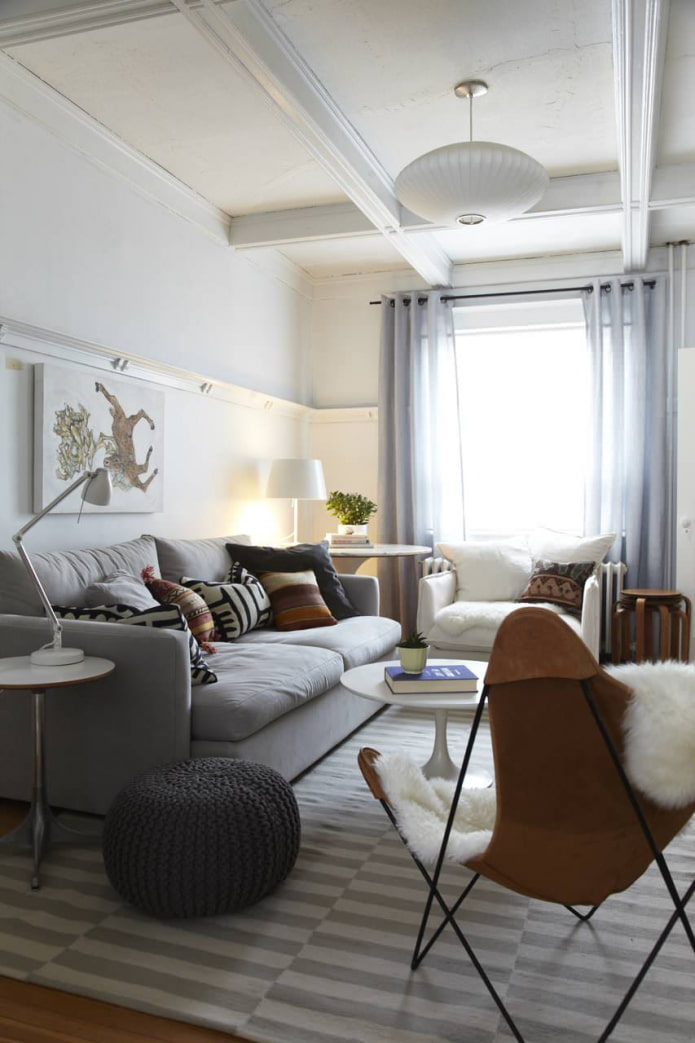
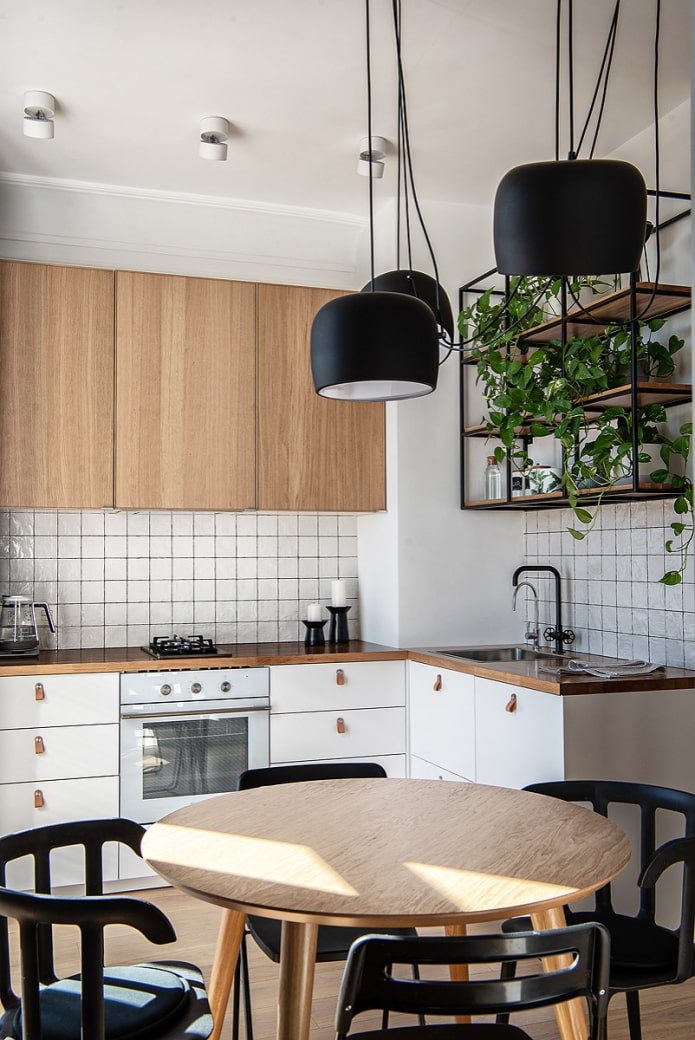
But even in a “typical” Scandinavian interior, you can find a place for bright colors – they are used in the most measured doses as accents. These can be pillows, vases or posters, which can be easily replaced depending on your mood. Such details make restrained interiors more lively.
In spacious Scandinavian apartments, you can also find a dark palette. An accent wall of a complex gray or emerald shade no longer surprises fans of the style – northern peoples adjust the environment to suit themselves and easily follow new trends.
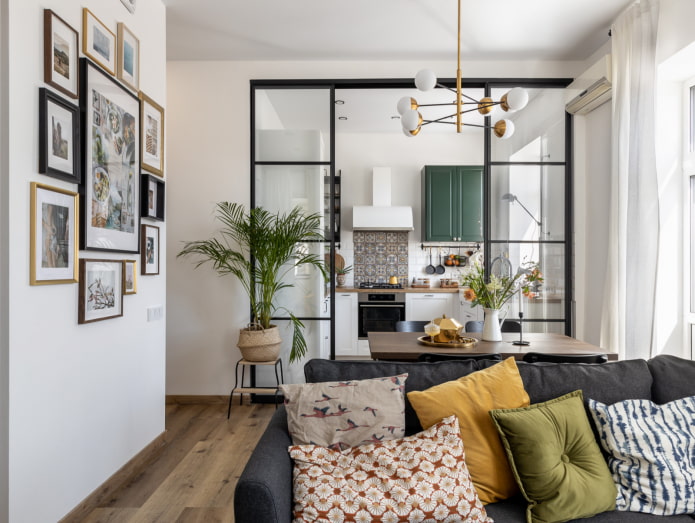
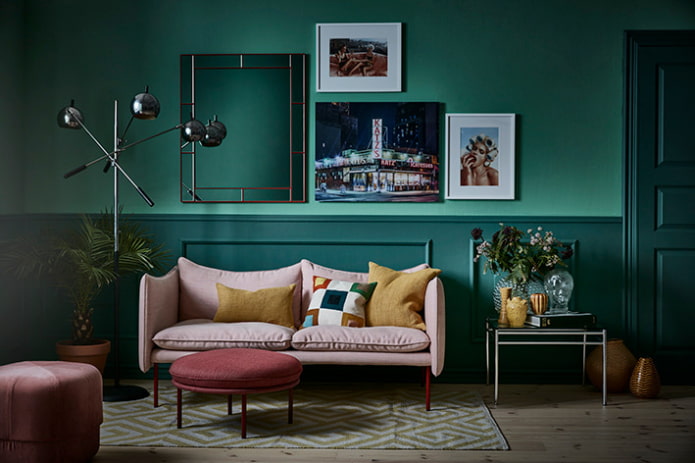
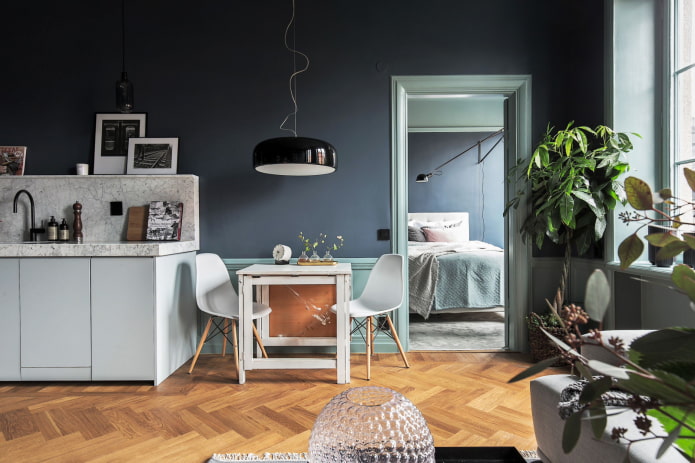
What finishing materials to use?
An important feature of the peoples of Sweden, Denmark, Norway and Finland is the desire to be closer to nature. For this reason, Scandinavians strive to use environmentally friendly finishing materials in their homes. Walls and ceilings are most often painted or plastered. Ceilings are often painted to match the walls, visually blurring the border between the two planes.
In Scandi interiors, you can find an unfaced brick wall, which adds texture to the decor. Clay is a natural material, so both bricks and tiles are welcome. Ceramic tiles are found on the floor and walls in the bathroom, as well as in the kitchen in the apron decoration.
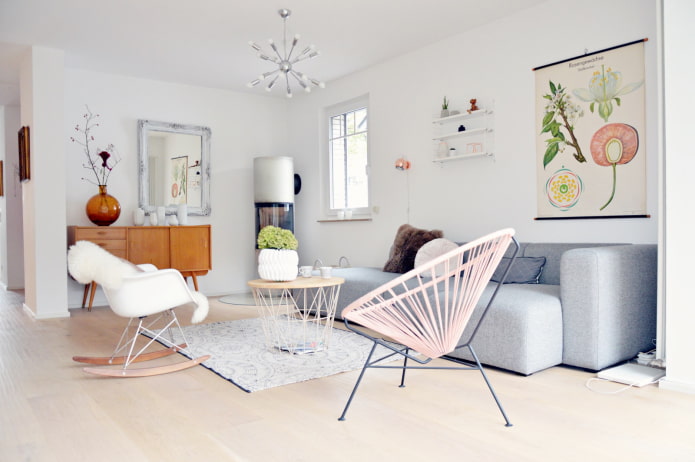
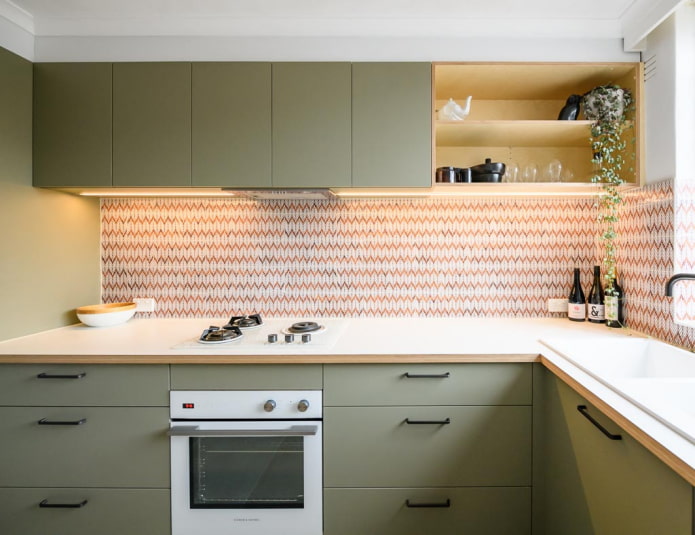
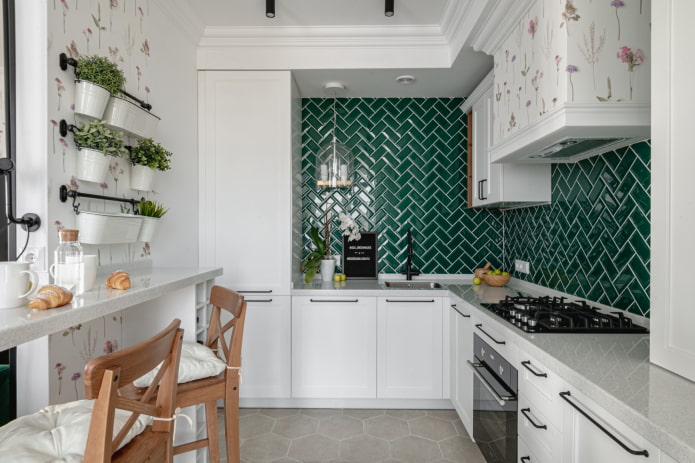
Light wood in the form of planks, parquet or parquet boards is used for flooring. Connoisseurs of Scandinavian interiors often restore old herringbone parquet to preserve the noble coating.
Laminate is used as a budget alternative. It is easier to handle and resistant to mechanical damage. The main thing is to choose a design that is as similar as possible to the natural pattern of wood.
In addition to paint, plaster and wood, cork and natural stone can be used in the decoration in doses, and wallpaper with a laconic print can be used to create an accent wall. It is better to replace plastic window sills with wooden ones. And we did a separate article about doors.
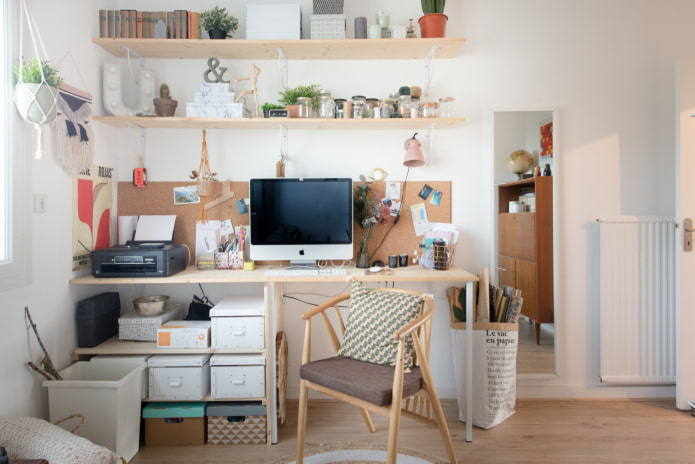

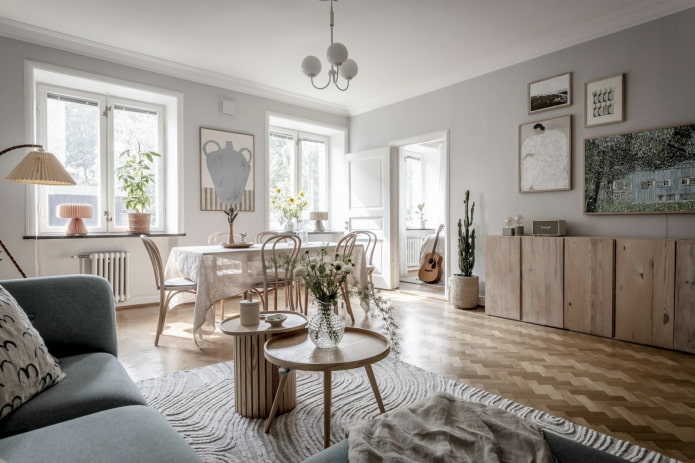
Recommendations for choosing furniture
It is difficult to imagine real Scandinavian interiors without wooden chairs and tables, including those that were produced in the middle of the last century. Against the backdrop of modern finishing, most restored Soviet pieces look fresh and stylish.
Dining sets often include several different chairs – this technique makes the kitchen look lived-in, as if the furniture had been passed down from generation to generation.
Scandinavians love sofas, cabinets and armchairs on legs – thanks to such “weightless” designs, the interior seems lighter and more spacious.
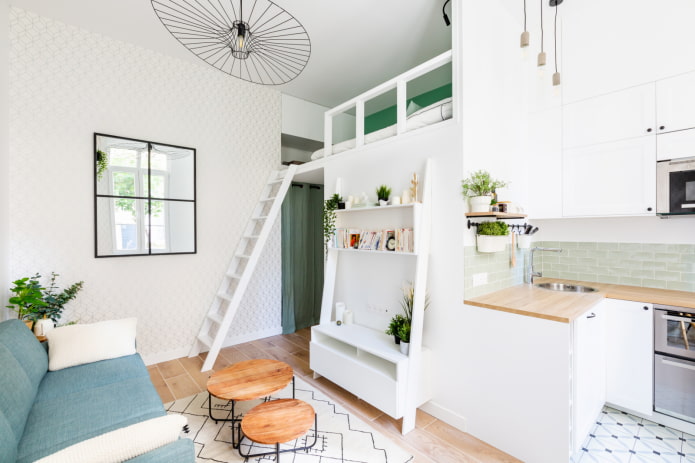
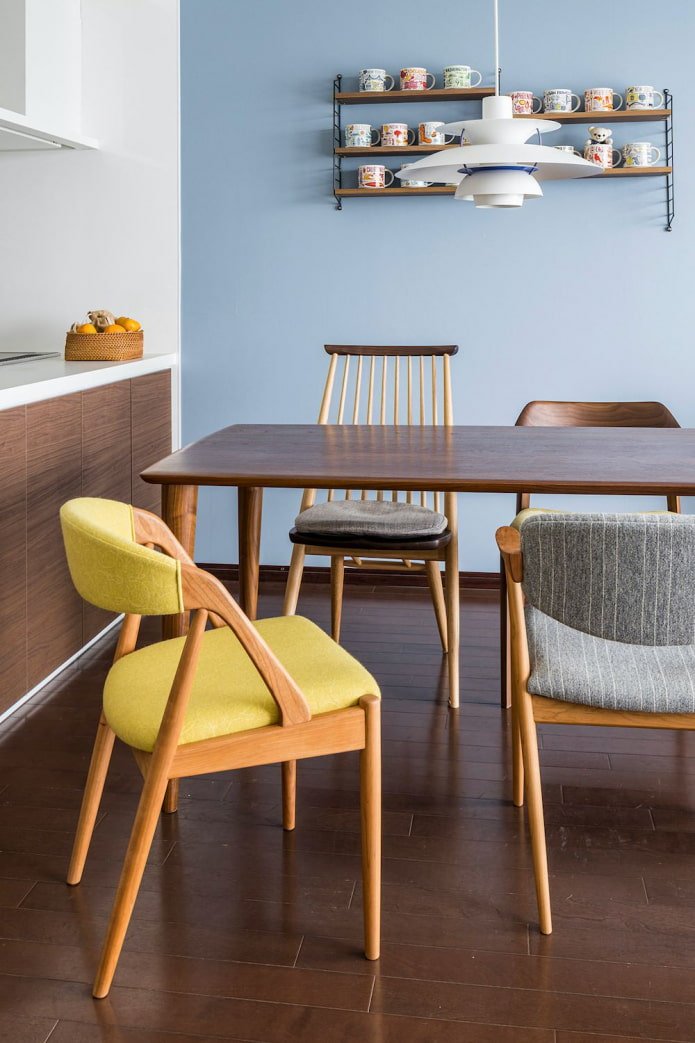
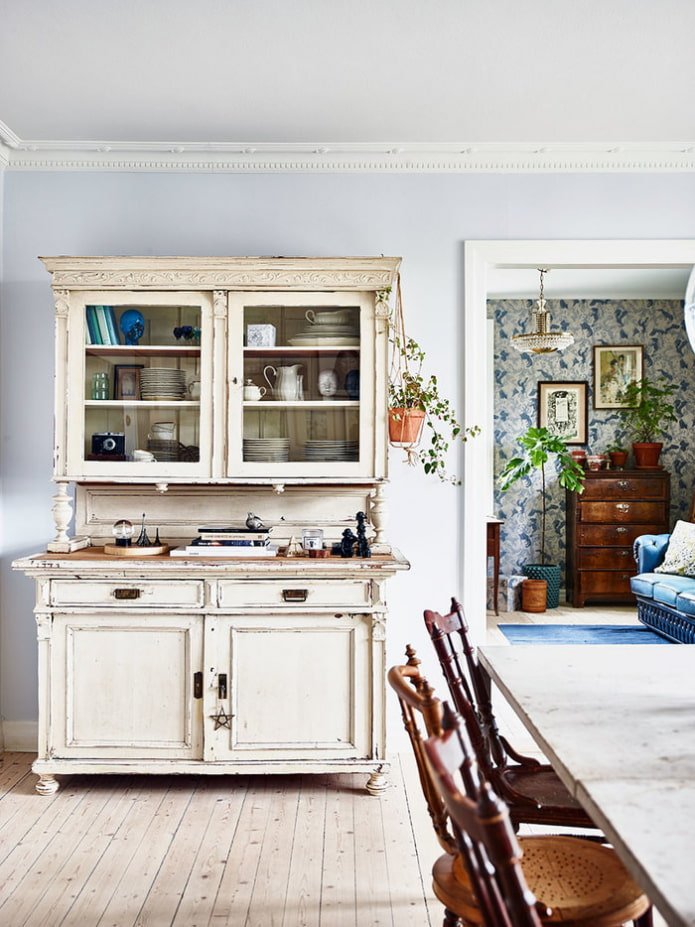
The functionality of furniture plays an important role, since in compact apartments it plays several roles at once. A transforming sofa is not only a storage space, but also an extra bed for guests. A folding table becomes larger during friendly gatherings, and folding chairs are taken out of the pantry.
The work area in a Scandinavian interior looks practical but attractive. Above the tabletop there are various mood boards, shelves and photographs.
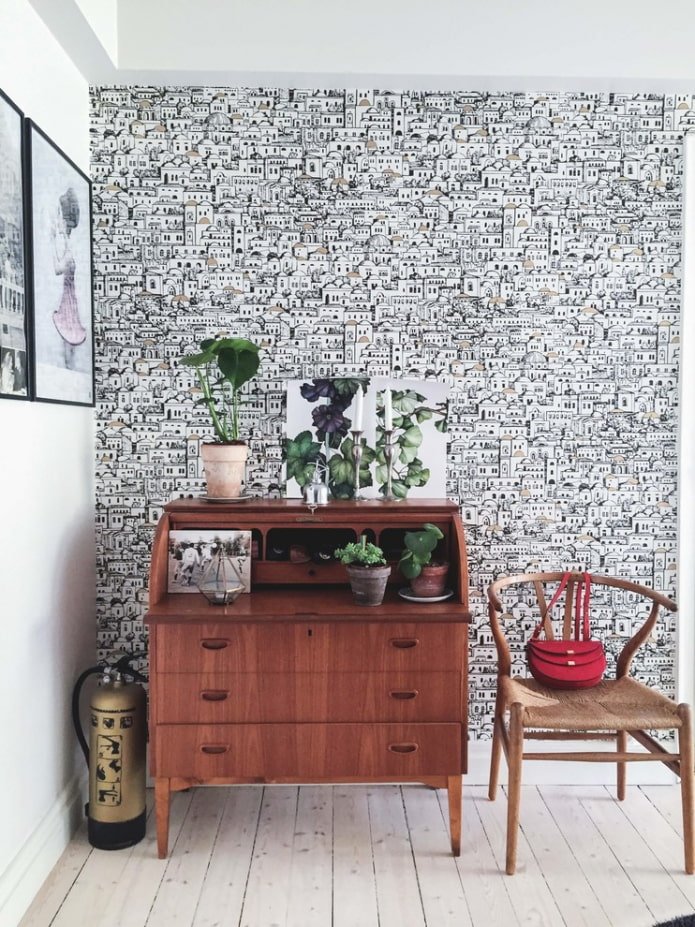
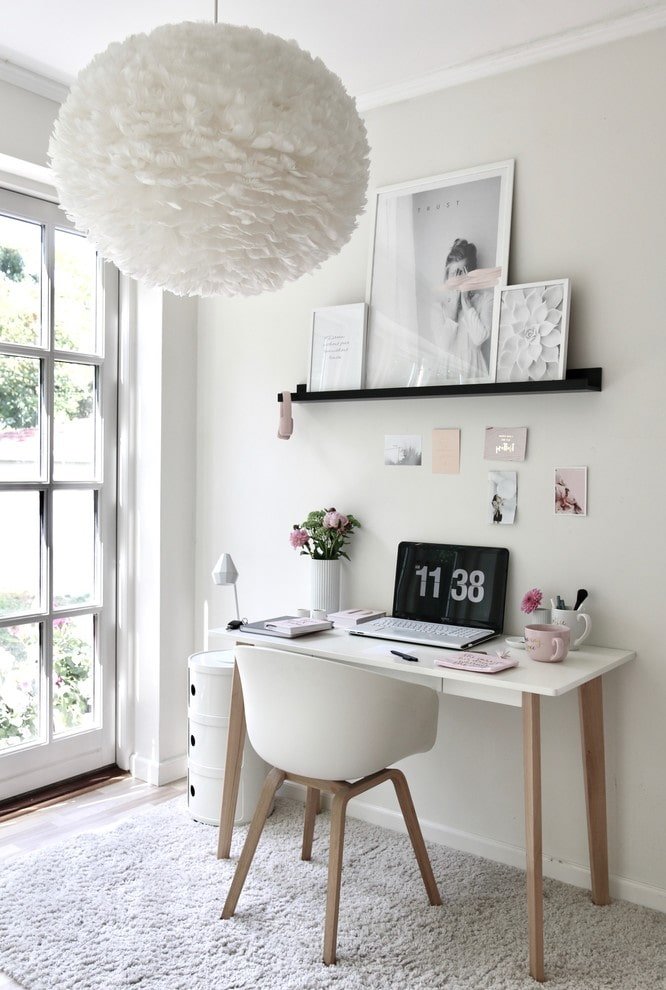
Features of choosing textiles
The choice of fabrics plays an important role in the design of the living room, bedroom and even the kitchen. If possible, Scandinavian residents do not close the windows with curtains at all, but this is not suitable for everyone. The best option is to use light natural curtains made of linen or cotton and avoid shiny fabrics.
The pattern on curtains and blankets is usually discreet or absent altogether. Thanks to plain textiles, there is less visual noise in the apartment. Scandinavians pay attention even to kitchen utensils – potholders, tablecloths and towels should not stand out from the overall style.
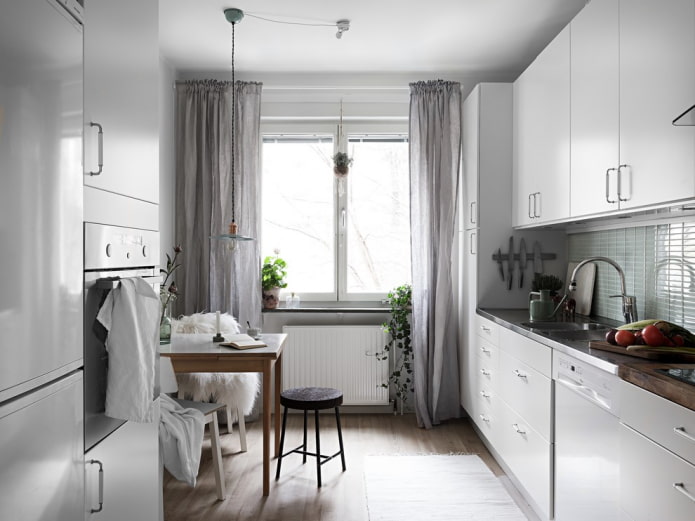
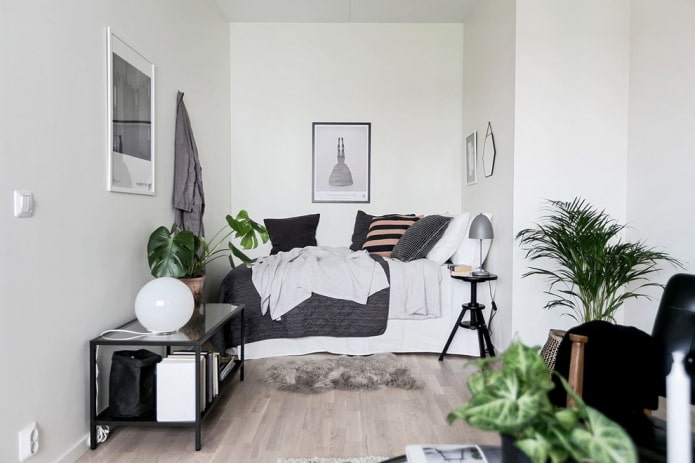
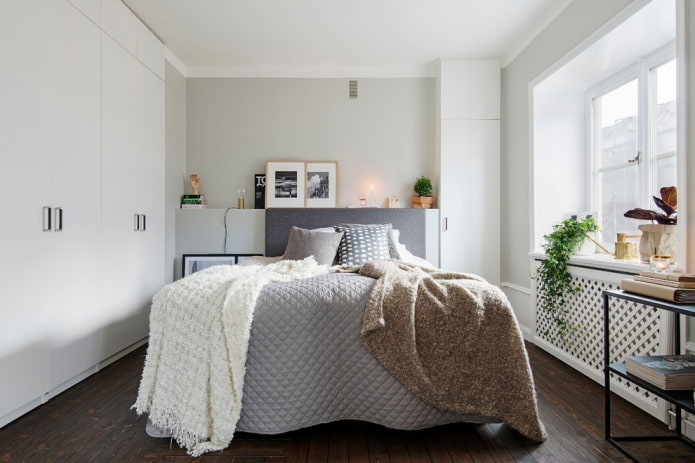
Cotton textiles, wool and imitation animal skins create home comfort and an atmosphere of hygge. Therefore, there are almost no restrictions in the choice of decorative pillowcases and carpets. Pillows and knitted blankets successfully complement living rooms and bedrooms, filling them with comfort. Floor rugs with geometric and ethnic patterns make the house warmer and fit organically into the overall decor.
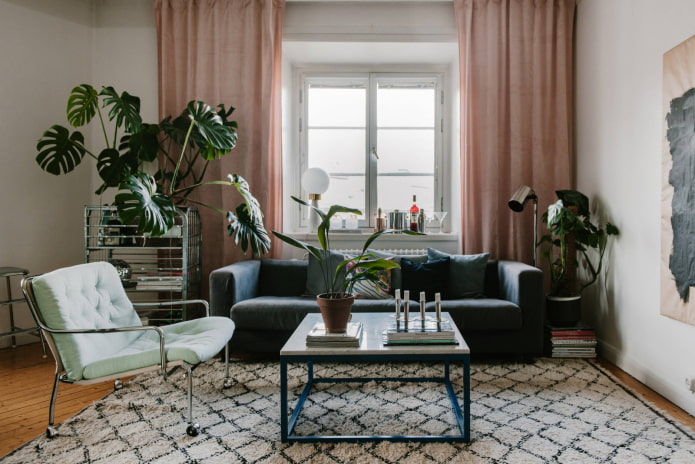
What decor is appropriate?
Ceramic flowerpots with indoor plants, vintage posters and suitcases will fit perfectly into the modern Scandinavian style. Thanks to such details, any room will look more comfortable. Open shelves can be filled with books (including second-hand books) and valuable little things.
You will have to work hard to find interesting accents, without which it is difficult to create a memorable Scandinavian interior. If you want to add some personality to your decor, order a painting from a budding artist, visit an antique shop or flea market, take a fresh look at old things from your dacha and incorporate them into your interior.
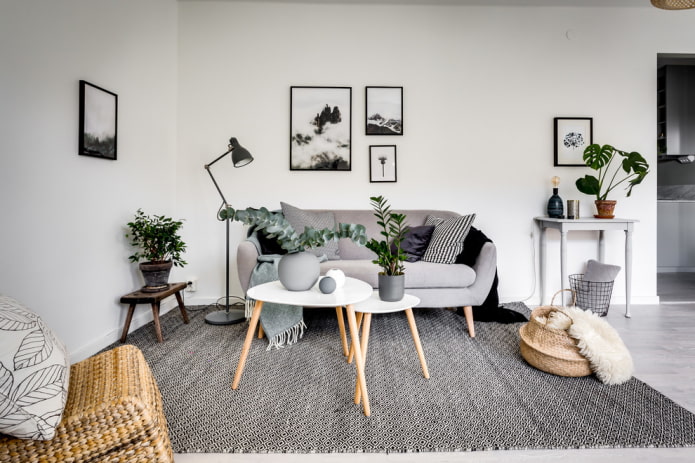
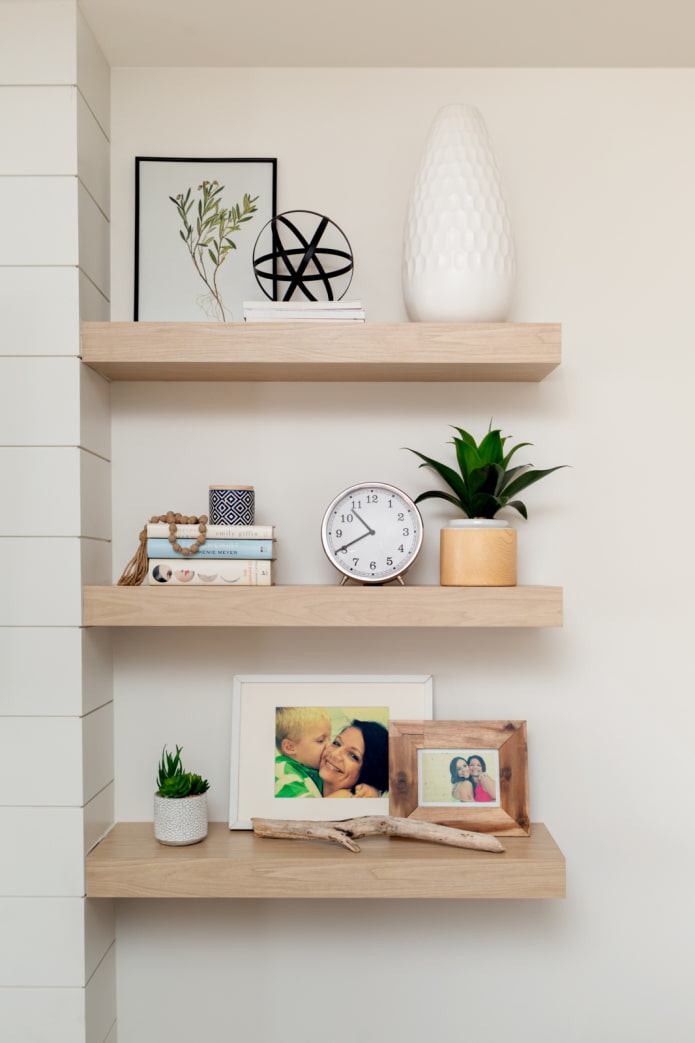
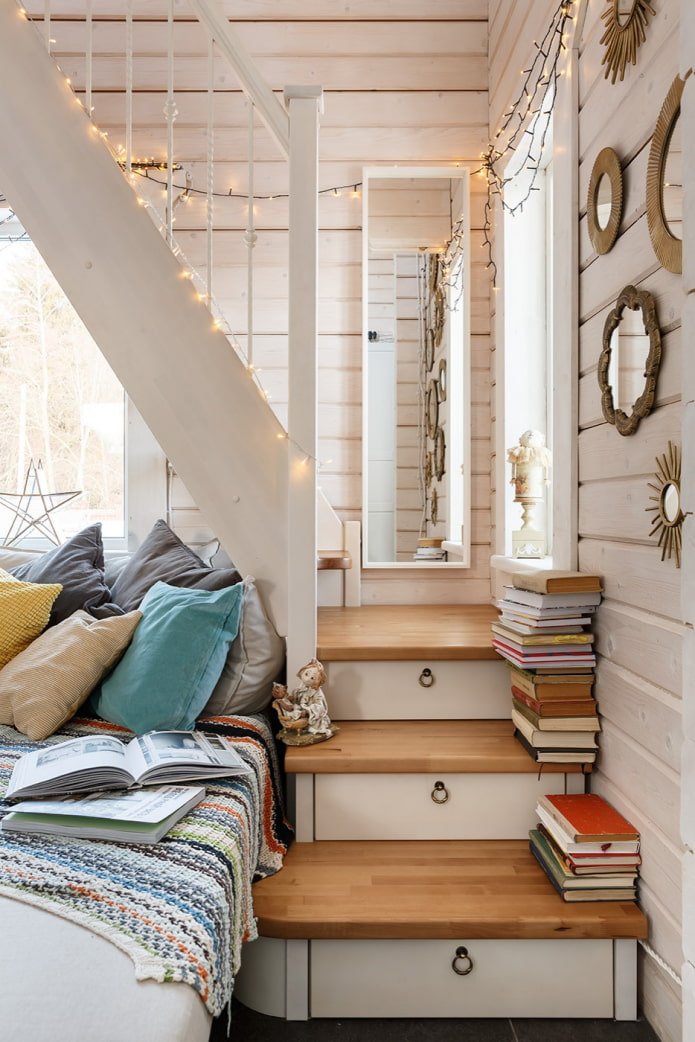
Ceramic tableware, unusually shaped vases made of transparent or colored glass, wicker baskets and wooden boxes will fit perfectly into the interior design in the Nordic style. Small things made of natural materials will make your stay in the house more comfortable and will please the eye for a long time.
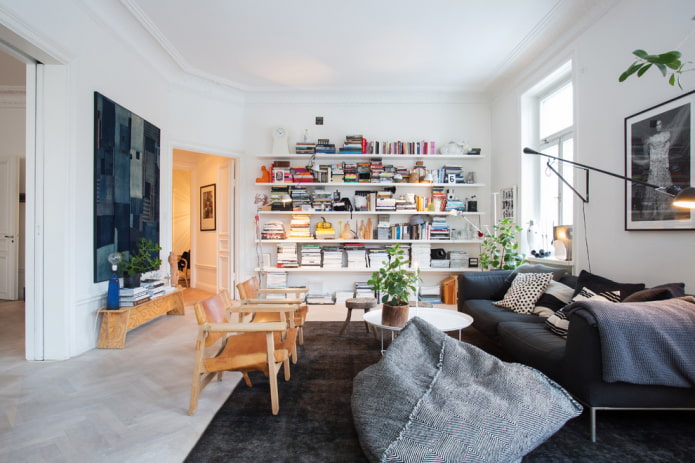
How does it look in the interior of the rooms?
Rooms in the Scandinavian style are always well lit. To “multiply” the lamps, add more mirrors. For example, order a wardrobe with mirrored facades, which will visually increase the space. Don’t forget about floor lamps, sconces and candles, which will add calm and friendliness to the atmosphere of the house.
Check out examples of Scandinavian kitchen-living room design.
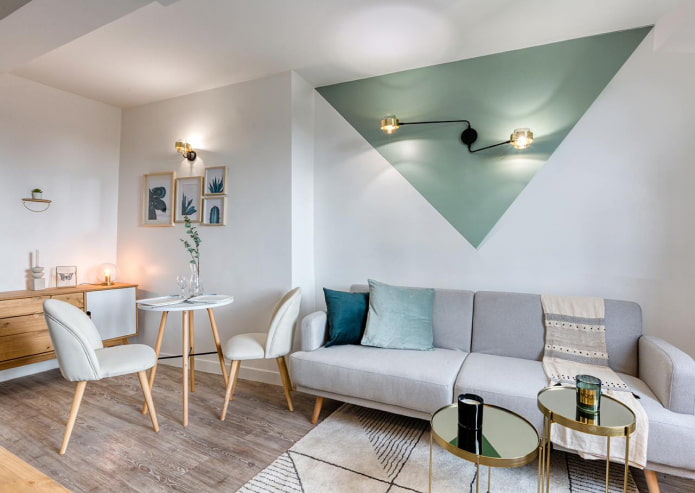
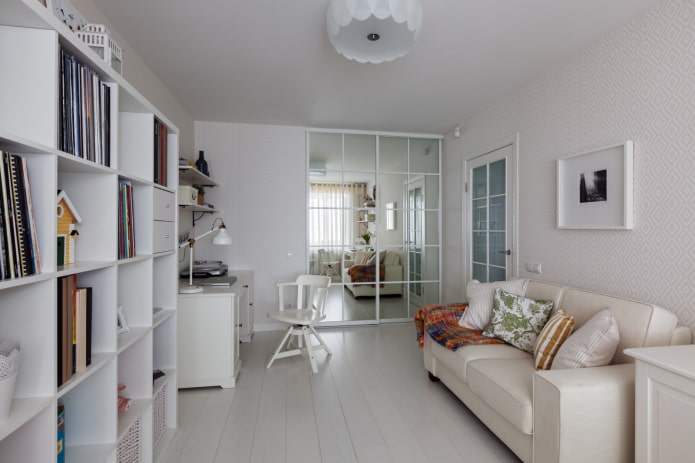
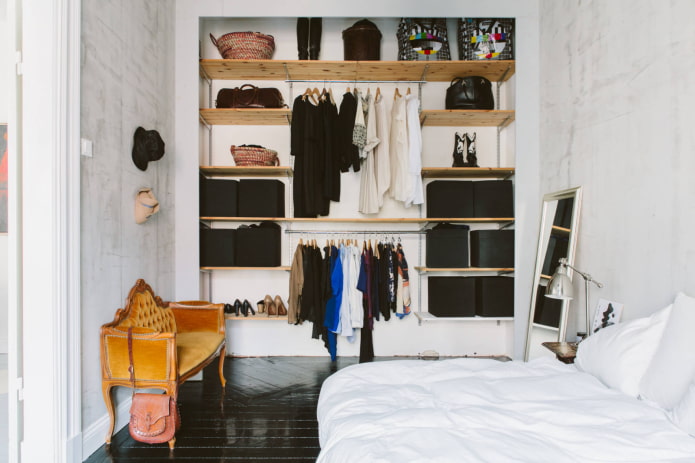
If you want to decorate a child’s room in Scandinavian style, add more bright accents – posters, garlands, toys. White walls will help reduce the amount of visual noise, so avoid flashy photo wallpaper and bed linen with cartoon characters.

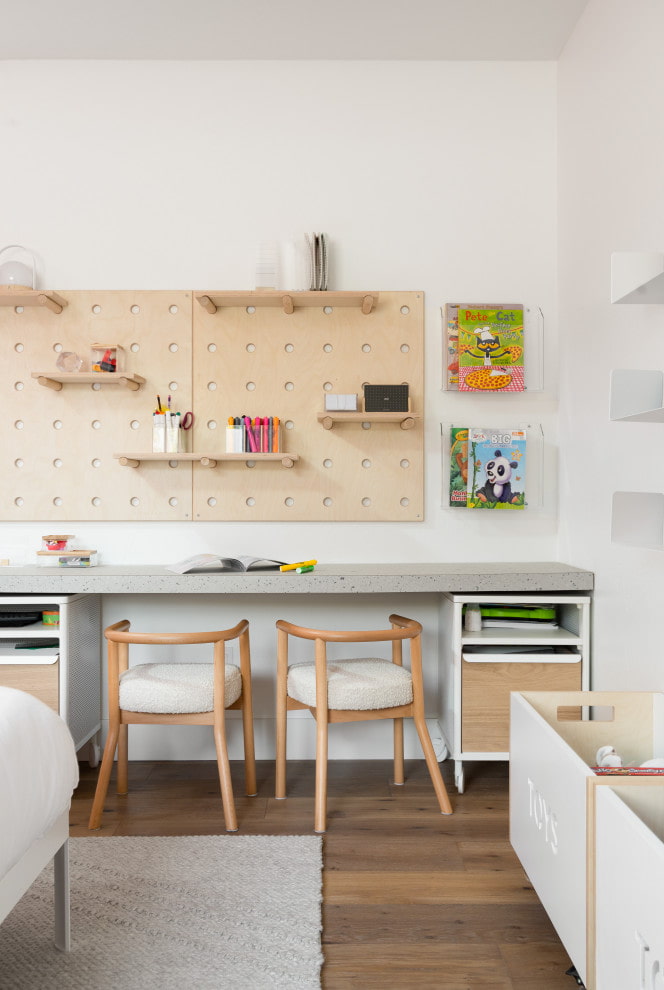
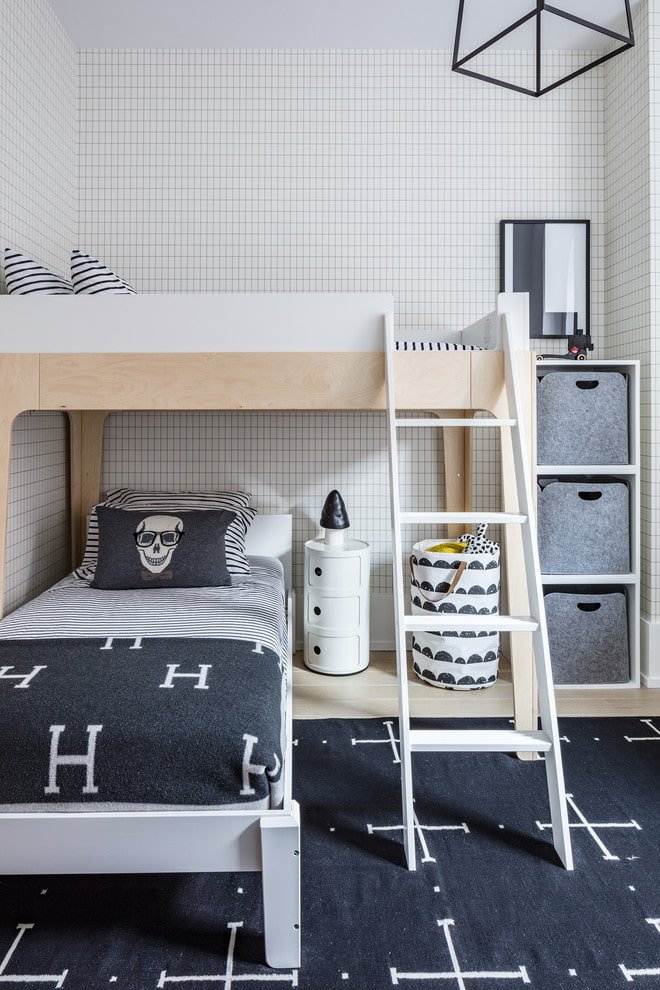
A small bathroom in Scandinavian style is most often monochrome. White tiles without patterns and contrasting grout are the hallmark of Nordic design. The whiteness and sterility of the bathroom are diluted with terry towels, baskets and rugs.
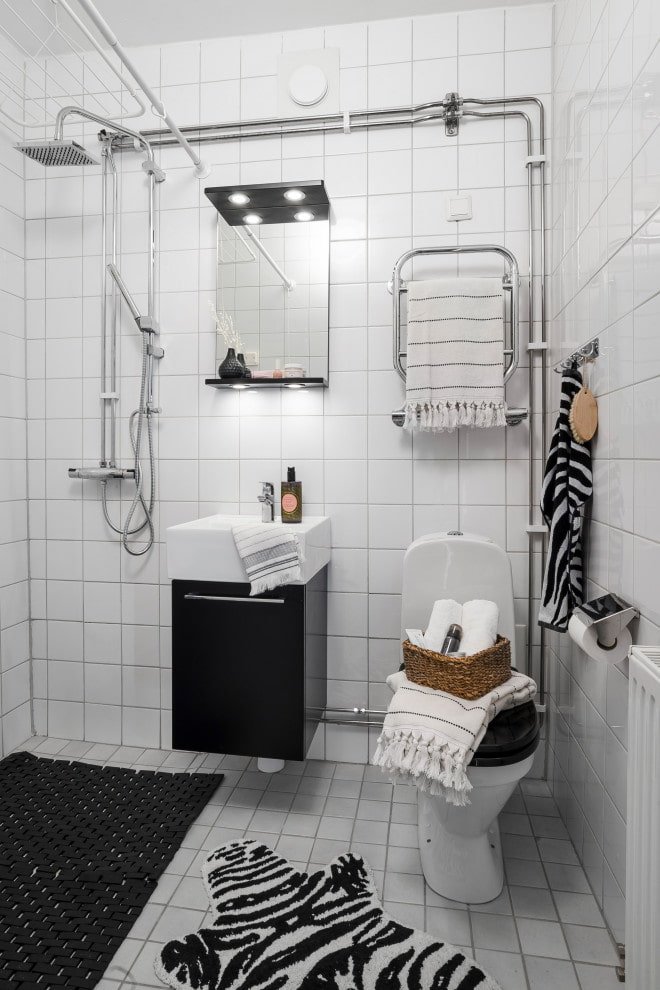
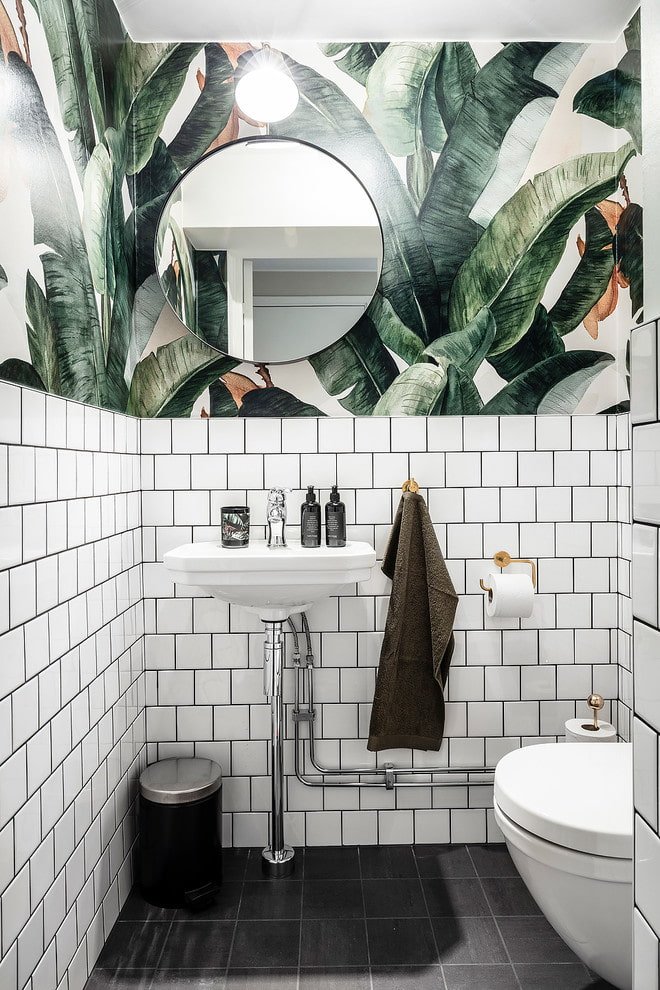
Scandinavian style in the interior is naturalness, freedom of expression and comfort, but at the same time restraint and tranquility. Do not overload the house with unnecessary things, use natural materials and Pay special attention to lighting to get a decent result.
Now reading:
- Eastern cuisine: inspiring ideas and real interior photos
- Comprehensive Guide to Buying a Used Opel Zafira
- Design of a one-room apartment in a Khrushchev building: 10 projects and 71 photos for interior inspiration
- Your Ultimate Guide to Buying a Used Nissan Micra
- Narrow Hallway: 45 Inspiring Design Ideas for Your Interior